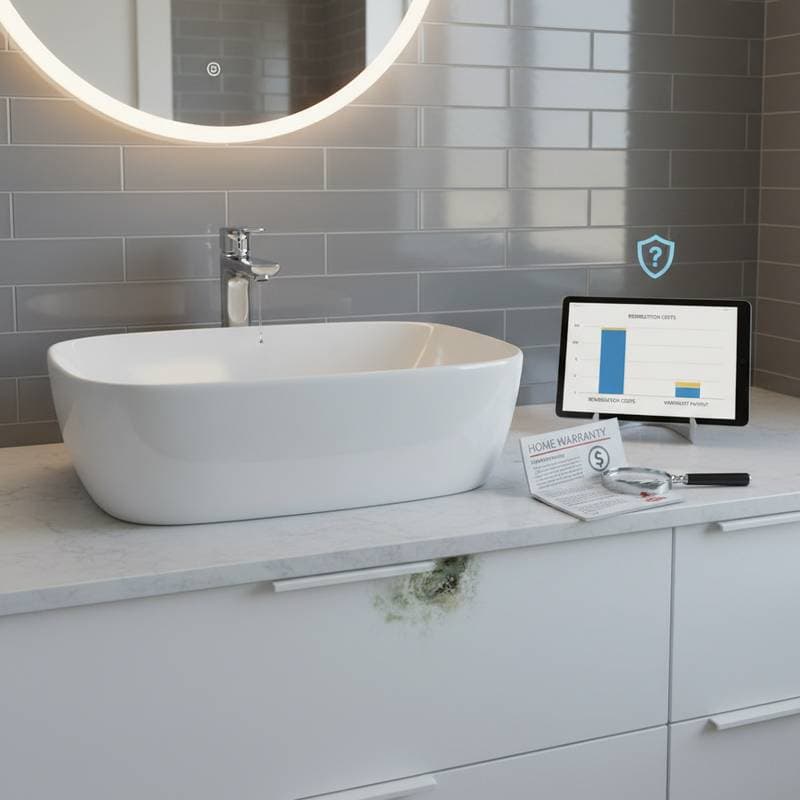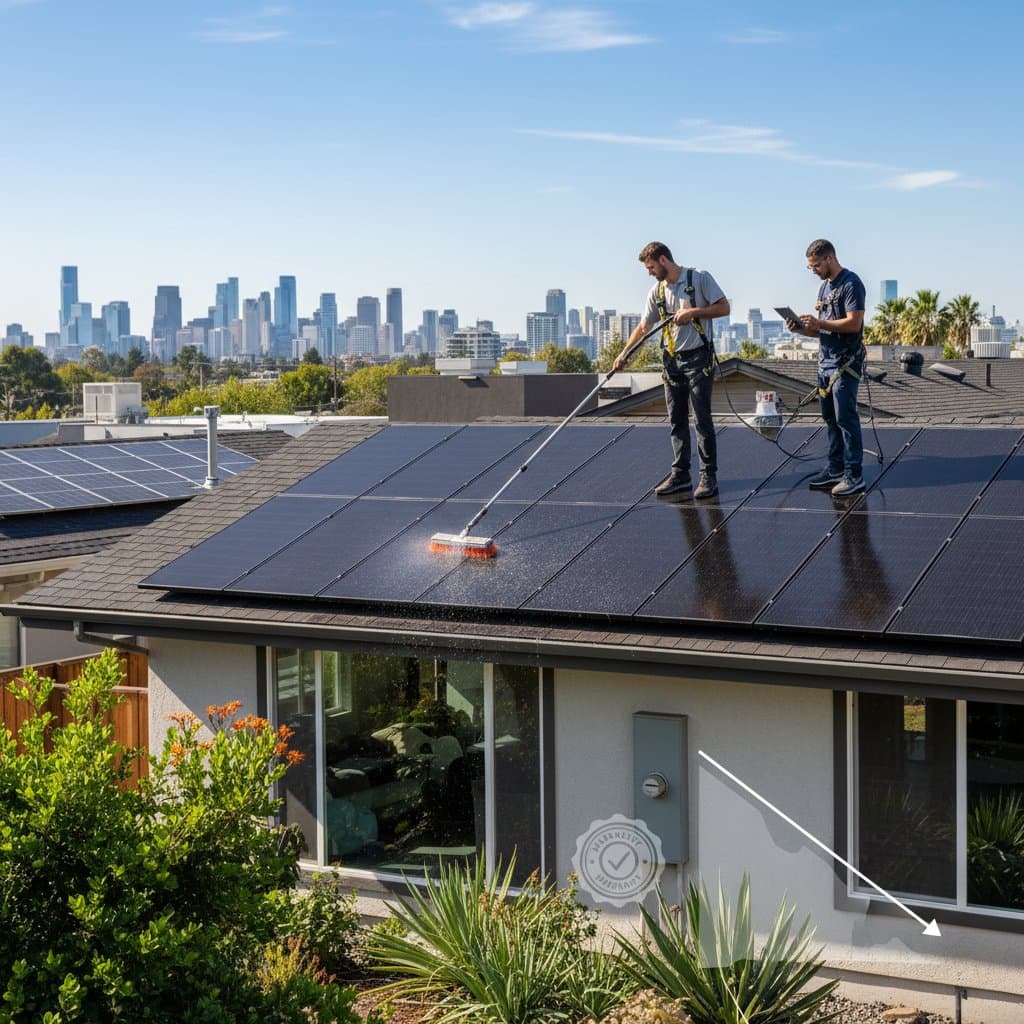Home Warranty Mold Limits: Exclusions and Costs
Mold represents one of the most common and expensive issues in households. It often develops silently behind drywall, beneath flooring, or near plumbing fixtures, eventually compromising indoor air quality and structural integrity. Numerous homeowners believe their home warranty will address mold removal, yet this expectation frequently results in denied claims and disappointment.
This guide details typical home warranty coverage related to mold, highlights common exclusions, outlines remediation expenses, and provides guidance on determining whether to submit a claim or pursue alternative repair methods.
Key Decisions and Factors
Prior to submitting a claim or purchasing additional coverage, consider these essential elements:
- Source of moisture: Home warranties address mechanical failures but exclude environmental factors or neglect.
- Extent of damage: Surface-level mold might require only basic cleaning that homeowners can perform themselves. Mold affecting hidden areas or structural components demands professional intervention.
- Policy add-ons: Certain providers offer restricted mold or environmental hazard endorsements.
- Exclusions: Prolonged leaks, inadequate ventilation, and pre-existing mold conditions receive no coverage in nearly all cases.
- Remediation costs: Professional mold removal typically ranges from $1,200 to $5,000, influenced by the affected area's size and the types of materials involved.
- Resale and health impact: Neglecting mold can diminish property value and pose risks to respiratory health.
- Documentation: Both insurers and warranty companies insist on evidence of equipment malfunction along with records of prior maintenance.
These factors enable informed choices that balance cost, coverage, and long-term home protection.
Pros and Cons of Home Warranty Mold Coverage Options
Standard Warranty Only
Pros
- Reduced monthly premiums
- Protection for mechanical failures that lead to moisture accumulation
- Streamlined service through a single contact point
Cons
- No reimbursement for mold removal or related cleanup
- Frequent disputes arise when moisture damage appears longstanding
- Insufficient safeguards against the financial burden of mold repairs
Warranty with Mold Add-On
Pros
- Partial compensation for remediation expenses
- Assistance with surface treatments and containment measures
- Simpler process compared to filing under separate insurance policies
Cons
- Payout caps seldom offset complete cleanup costs
- Additional premium required each month
- Exclusions persist for extensive rebuilding or damaged personal belongings
Homeowners Insurance with Mold Endorsement
Pros
- Potential for larger reimbursements
- Coverage extends to structural elements and occasionally temporary accommodations during remediation
- Wider scope of qualifying incidents
Cons
- Elevated premiums and deductibles
- Necessitates review of claim history and on-site inspections
- Possible increases in future insurance rates
Evaluating these options helps align coverage with specific household needs and risk levels.
Timeline and Order of Operations
Mold incidents typically proceed through these structured steps for resolution:
- Identify moisture source. Inspect plumbing lines, appliances, roofing, and HVAC drainage systems thoroughly.
- Stop active leaks. Home warranties often cover repairs stemming from mechanical breakdowns.
- Document the issue. Capture photographs and record dates for all observable damage.
- File a warranty claim. Limit the request to inspection of covered systems.
- Obtain a professional mold inspection if necessary. This assessment verifies the mold species and extent of spread, guiding further actions.
- Contain and remediate. Engage certified specialists for any area exceeding 10 square feet to ensure safe handling.
- Dry and rebuild. Restore removed sections by installing new drywall, flooring, and insulation materials.
- Review prevention steps. Enhance ventilation or add a dehumidifier to prevent future occurrences.
Small-scale efforts generally conclude within one to three days. Extensive projects may require one to two weeks, accounting for drying periods and reconstruction phases.
Homeowners who follow this sequence minimize disruptions and maximize the chances of successful claims or repairs.
Materials and Tools Checklist
For minor cleaning tasks that homeowners handle independently:
- N95 respirator mask for respiratory protection
- Nitrile or rubber gloves to prevent skin contact
- Safety goggles to shield eyes from irritants
- Plastic sheeting and painter's tape for isolating the work area
- Spray bottle filled with an appropriate cleaning solution
- Scrub brush or sponge for surface treatment
- HEPA vacuum to capture airborne particles
- Dehumidifier or fans to facilitate drying
For professional-level containment and removal:
- HEPA air scrubbers to filter contaminants from the air
- Negative air machines to maintain controlled airflow
- Commercial dehumidifiers for efficient moisture extraction
- Antimicrobial sealant to inhibit regrowth
- Moisture meter to detect hidden dampness
- Disposal bags designed for biohazard materials
Assembling these items in advance streamlines the process and enhances safety.
Regional and Climate Considerations
Local humidity and temperature levels significantly influence mold proliferation and concealed moisture buildup.
- Humid regions: Residences in coastal or southern areas benefit from constant ventilation and dehumidifier use to combat persistent dampness.
- Cold climates: Condensation frequently forms on windows and attic surfaces. Proper insulation and humidity control indoors prove essential.
- Dry climates: Mold occurrences remain infrequent, yet plumbing failures may evade detection longer amid low ambient humidity.
While home warranty provisions remain consistent across regions, mold vulnerabilities vary. Customize maintenance routines to match prevailing weather conditions, such as scheduling more frequent inspections in high-humidity zones.
FAQs
Will my home warranty pay to remove mold?
Typically, no. The warranty addresses repairs to the leaking appliance or pipe responsible for the moisture, but excludes cleanup and structural reconstruction.
Can I add mold coverage to my warranty?
Select providers include optional mold riders. These deliver restricted reimbursements, generally between $250 and $1,000, subject to defined eligibility criteria.
Next Steps for Protecting Your Home
Armed with knowledge of coverage limitations and remediation realities, homeowners can proactively safeguard their properties. Review current policies annually, integrate routine moisture checks into maintenance schedules, and consult professionals for persistent issues. These measures not only preserve home value but also promote healthier living environments.



